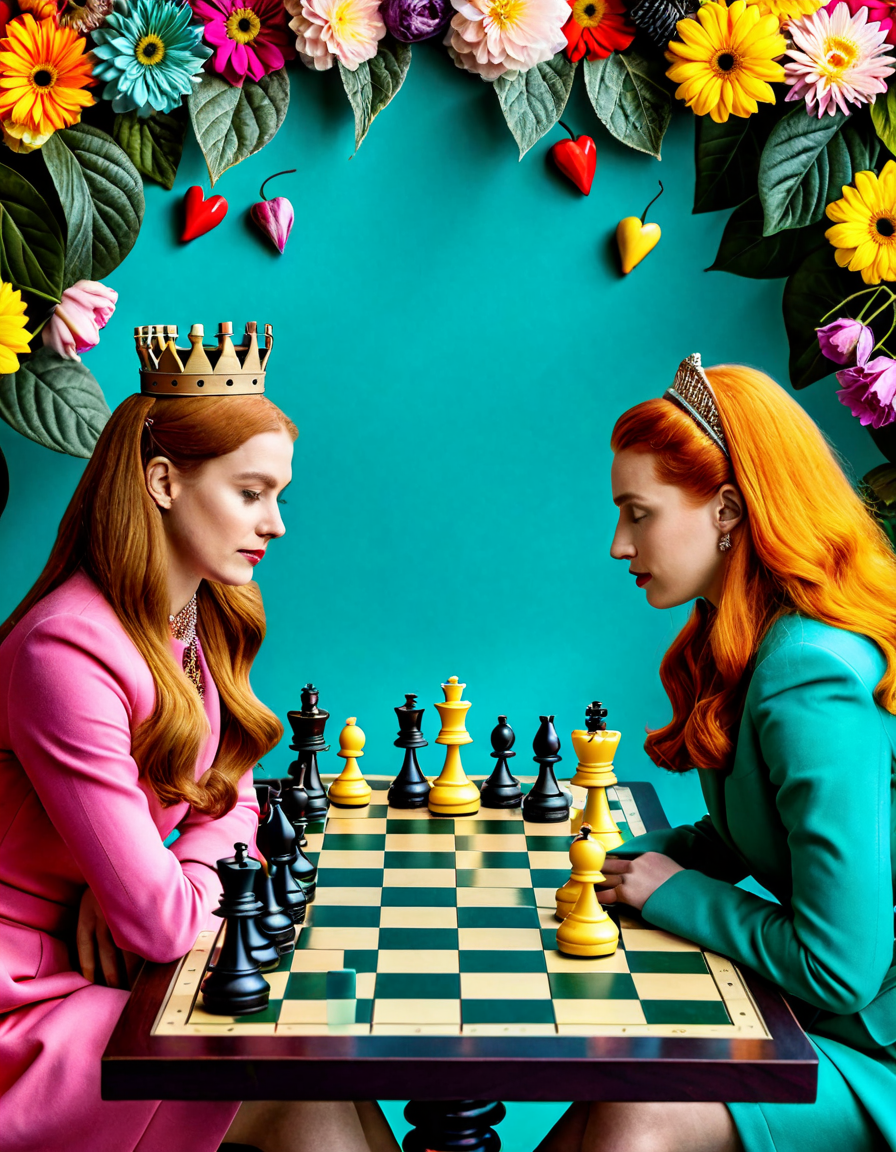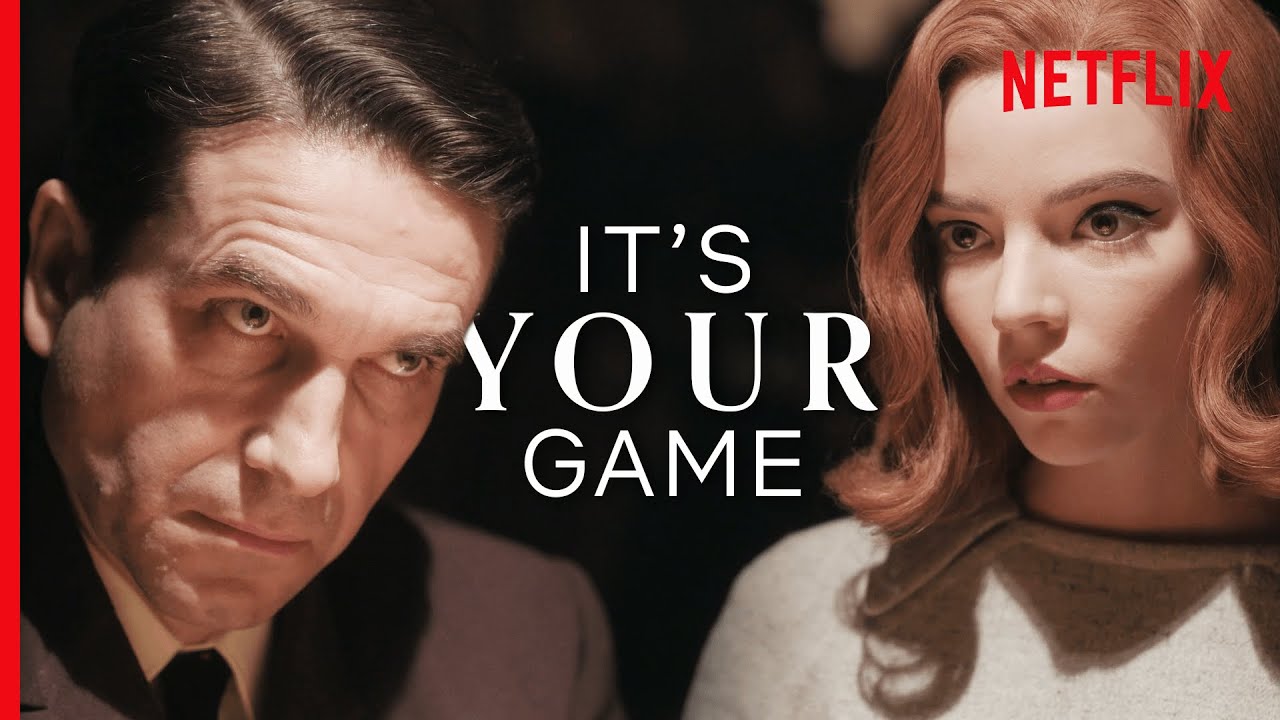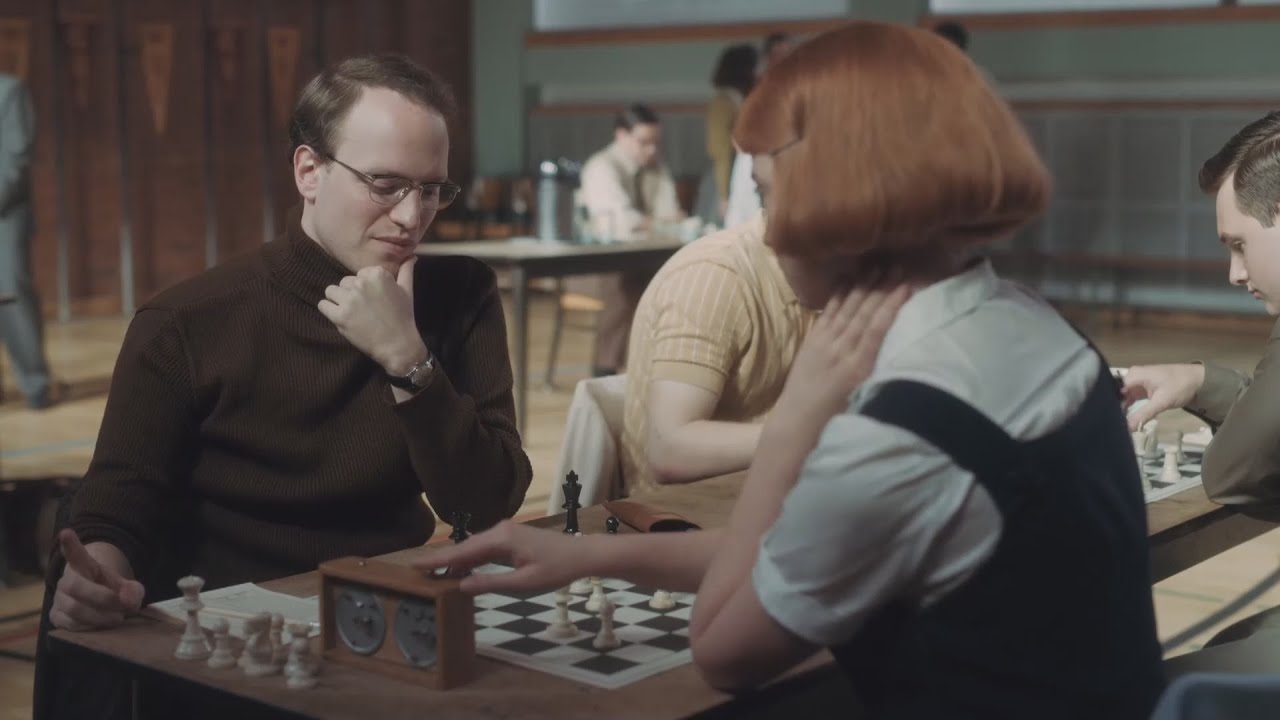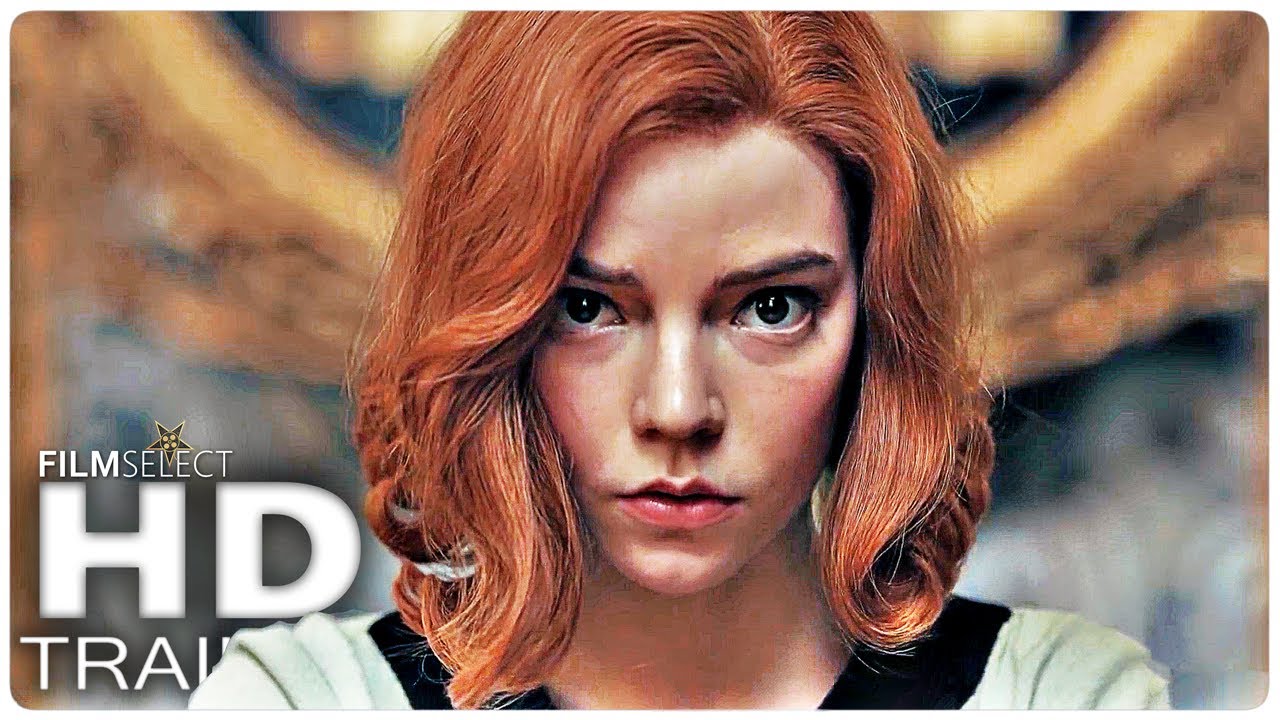The Queens Gambit: A Game-Changer in Television Storytelling
The success of The Queens Gambit extends beyond its compelling narrative and exquisite cinematography; it reignited a passion for chess like never before. Released in 2020 on Netflix, the limited series quickly captivated audiences across various demographics, becoming a binge-worthy sensation. Its portrayal of the life of Beth Harmon, a gifted chess prodigy played masterfully by Anya Taylor-Joy, not only showcased intricate chess strategies but also drew parallels between her personal battles and the game itself.
The series is based on the novel by Walter Tevis, a fitting nod to the compelling storytelling rooted in both the book and the adaptation. Beth’s journey from an orphan to a national chess champion was not just about the game but also an exploration of resilience and determination, making it a universal tale. With its incredible pacing and sharp dialogue, the show managed to keep viewers on the edge of their seats, wanting more from the tantalizing world of high-stakes chess.
What made The Queens Gambit feel groundbreaking was its ability to transform conversations about chess into mainstream dialogues. Suddenly, checkmate and pawn structures became hot topics in coffee shops and online discussions. When viewers basked in the visual and narrative splendor of Beth’s life and chess matches, they found themselves not just watching but feeling the intense emotions, strategies, and stakes involved. Who would have thought chess could become today’s hottest topic?

Top 5 Reasons Why The Queens Gambit Resonates with Audiences
Rich Character Development
One of the standout elements of The Queens Gambit is its profound character arcs. Anya Taylor-Joy delivers an unforgettable performance that captures Beth Harmon’s brilliance amid her struggles with trauma, addiction, and isolation. Unlike typical one-dimensional characters, Beth stands out as a multi-faceted personality navigating competitive and societal pressures, drawing viewers deeper into her gripping journey.
The series expertly weaves Beth’s character development with her evolution as a player. As she grapples with her inner demons, viewers witness personal growth paralleling her journey across the chessboard. This deep connection allows audiences to cheer for Beth, feeling every victory and setback as a reflection of their own challenges.
It’s this rich character development that ultimately keeps viewers coming back for even more. Each episode peels back another layer, as fans find themselves rooting for Beth, wanting to see her not just win but thrive against the odds.
Inspiring Female Representation
The Queens Gambit breaks stereotypes by showcasing a strong female lead in the traditionally male-dominated world of chess. Beth’s audacious journey challenges gender norms, inspiring women everywhere to pursue their passions fearlessly, regardless of societal expectations. This shift holds significant cultural weight, especially considering how chess institutions like the Women’s Chess Association have seen increased interest and participation since the series’ release.
Further, the show portrays the male characters as supportive instead of antagonistic. This refreshing take creates an environment where Beth can shine without being diminished by others, a crucial aspect of authentic representation. It empowers viewers to embrace their uniqueness, urging them to contribute to fields that traditionally underrepresented their gender.
When audiences see a character like Beth rise above challenges, it sparks hope—showing girls and women that they can achieve greatness in any arena, even one as cerebral and competitive as chess.
Chess as a Metaphor for Life’s Struggles
At its core, The Queens Gambit uses chess as a profound metaphor for life’s challenges. Each chess move plays out like a choice in Beth’s life, where the consequences of her decisions echo the stakes of each game. This clever narrative technique resonates deeply with audiences, allowing viewers to appreciate both the game and Beth’s story on a more emotional level.
For example, every blunder she makes on the chessboard mirrors a mistake in her personal life—choices tainted by addiction and fears. This parallel draws viewers deeper into the narrative, revealing that while chess may seem simple at first glance, it’s filled with intricate strategies and adaptations, just like life itself.
The way the series intertwines these themes invites audiences to reflect on their own lives. No wonder viewers who watch The Queens Gambit express an increased desire to tackle their challenges head-on, inspired by a young woman conquering her demons in a high-stakes environment.
The Aesthetic Appeal
Visually, The Queens Gambit is a work of art. Its stunning production design captures the essence of the 1960s, with vibrant costumes, intricate set designs, and breathtaking cinematography. Every frame not only transports viewers to a different era but also amplifies the drama and tension, making those chess matches feel palpably intense.
The meticulous attention to detail in the series’ aesthetic enhances the storytelling, pulling viewers into a world that feels both authentic and intoxicating. From majestic chess pieces glimmering under lights to the lush green landscapes of Kentucky, each element serves a purpose—drawing audiences deeper into Beth’s quest for greatness.
This aesthetic brilliance doesn’t just serve the story; it adds a whole new layer of engagement. Fans often gush over particular scenes, analyzing the visual setups while discussing their favorite moments. Who doesn’t love a show that can stir both intellectual conversations and pure fandom excitement?
The Influence on Chess Popularity
Since the release of The Queens Gambit, chess has seen an explosion in popularity. Online platforms like Chess.com and Lichess registered huge spikes in new memberships, with millions flocking to learn and play. People no longer perceive chess as a mere game for older individuals; they now experience it as a vibrant, engaging pursuit that welcomes newcomers.
Even tournament landscapes have transformed. Youth participation surged, reflecting a newfound interest among younger generations to compete in chess. Initiatives inspired by the show, such as community chess clubs and school-based programs, expand chess’s reach to demographics previously disengaged.
With chess sets flying off shelves, it’s clear that The Queens Gambit has crafted a legacy that transcends the screen—one that reshapes perceptions and invites everyone to embrace the strategies and beauty of chess.
The Cultural Impact of The Queens Gambit on Modern Media
The fallout from The Queens Gambit has reignited discussions about storytelling techniques in modern media. Not only did the series bring forth a unique narrative style, but it also influenced creators to explore themes woven with rich characters and intellectual challenges. Shows like “Better Call Saul” and films like “The Imitation Game” have adopted a similar depth, thereby ensuring that compelling stories dominate the landscape.
Moreover, discussions around representation in film and television gained volume. The series not only illuminated societal issues but also highlighted the need for more diverse representations across genres. It encouraged writers and filmmakers to take risks, exploring narratives that delve into nuanced character arcs while shunning conventional tropes.
As creators work to match the expectations set by this unique series, it’s safe to say that The Queens Gambit has changed the creative game. With storytellers aiming to give viewers satisfying, character-driven tales, its influence will resonate far beyond the chessboard.

How The Queens Gambit Changed Perceptions of Chess
The Queens Gambit has effectively rehabilitated the image of chess from the dusty game of your grandparents to a dynamic and exciting pursuit for all ages. The series inspired a new generation of chess influencers, like GothamChess (Levy Rozman) and international champion Judit Polgár, who utilize social media to engage with audiences, demystifying the elite world of chess.
This renaissance also opened avenues for educators. Many influencers and educators have taken to platforms like TikTok and YouTube, spreading knowledge about chess strategies and basics, making the game more accessible than ever. Suddenly, chess clubs sprang up in schools and community centers, fueled by interest from young viewers eager to challenge one another.
As a part of this cultural reshaping, the elitism often associated with chess has all but vanished. Now, discussions about the latest chess tournaments, like the recent thrilling bouts in the Dallas Wings vs Chicago Sky match, brim with excitement and engagement, while trends inspire newcomers to join the fun.
Future Prospects: The Queens Gambit and Beyond
As we look ahead to 2026, the legacy of The Queens Gambit shows no signs of fading. New media projects focusing on chess and strategy will likely spring up, giving a nod to Beth Harmon’s spectacular journey. Potential ideas include documentaries showcasing contemporary female chess players, educational workshops, and even interactive gaming experiences that invite more participants into this magnetic world.
Talk of a second season creates buzz among fans eager to see more of Beth’s journey, even if it takes different directions. Accordingly, discussions about follow-up projects ensure chess remains a hot topic for the foreseeable future. Much like how Dantes inferno in literature has sparked rich conversations about the human experience, so too does The Queens Gambit inspire viewers to explore their own challenges, invoking a palpable desire to compete and grow.
In closing, The Queens Gambit has revolutionized our understanding of chess and sparked a renaissance in character-driven storytelling. Its impact stretches across cultural dimensions, from empowering women in traditionally male spaces to promoting the joys of gaming. As this modern classic continues to inspire audiences anew, it encourages both seasoned players and novices to engage with the beautiful complexity of chess, keeping the conversation alive for years to come. Chess is not just a game—it’s an adventure waiting to unfold!
The Queens Gambit Trivia: Chess and Culture Collide
The Allure of Chess
“The Queen’s Gambit” took the world by storm with its stunning portrayal of chess, a game filled with strategy and intellect. Did you know the series isn’t merely about chess moves? It also reflects a deep character study that resonates with viewers of all ages. An interesting tidbit: the show sparked a massive surge in chess-related products, including chess sets and books. It’s reminiscent of the excitement fans felt during dramatic sports moments like the Dallas Wings Vs. Chicago sky match player Stats that heighten competition for dedicated spectators. The vibrant visuals of chess pieces in the show often draw comparisons to the exhilarating atmosphere of thrilling games, often underlined by strategies reminiscent of seeking a win in any competitive arena.
Behind the Scenes
The series showcases the remarkable talent of its cast, with Anya Taylor-Joy’s performance gaining her worldwide acclaim. Interestingly, she prepared for many of her scenes by practicing with former world chess champion Garry Kasparov! This level of dedication mirrors the painstaking efforts by athletes during their training, much like how fitness enthusiasts use tools like the arc trainer to up their game. They all need precision and a bit of finesse! Plus, did you know that Netflix reportedly saw a huge spike in chess-themed searches right after the show’s release? Imagine the excitement akin to the buzz surrounding an iconic film like Disturbia, where suspense grips the audience.
Cultural Impact
“The Queen’s Gambit” also delves into profound social themes beyond chess. It sheds light on issues like addiction, loneliness, and female empowerment, posing questions that resonate with many. This narrative similarity to the concept of quid pro Quo reflects how characters navigate their relationships while pursuing their goals. The fashion choices showcased, reminiscent of styles seen in places like Elmsford , Ny, also caught the eye of fashion enthusiasts and helped shape a retro trend! It seems the show has sparked not just interest in chess but also conversations about the underlying themes that mirror real-life struggles and celebrations of achievement, echoing the experiences of figures like Prince Philip, who often faced complex situations with grace.
All in all, “The Queen’s Gambit” is more than a journey through the intricacies of chess—it’s a cultural phenomenon that has inspired countless viewers and chess players alike. So, whether you’re a fan of the game or just someone enticed by a good story, there’s a little bit of something for everyone in the series, including a delightful nod to relatable characters and the thrill of a hard-fought victory akin to the journey of Elisa Johnson, who embodies resilience and determination in her own right.








